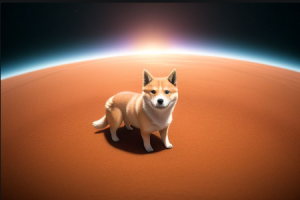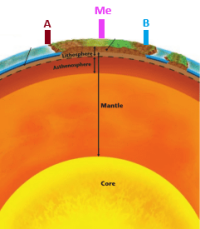On a
small ball, like that silly picture, sure! Or the (round) earth as seen from the moon. But not on a large ball, when you're a tiny percentage of its radius off the surface. Are you really doing your thinking based on such pictures?? You need to start imagining reality.
Suppose you're right; 360 meters is only 0.5% of 68 km. (360/68000 = 0.0053) That's hardly perceptible. Have you seriously thought about the numbers?
Here, I've drawn a circle (
red) with a radius of 6378 units, and put two points (
green) on it 34 units to the left and right of the point (
red) at the top of the circle, for a total distance of 68 units. The
green broken line joins the two points. Can you tell the difference between the line and the circle?
View attachment 37583
That is perhaps what you are seeing (though, again, your calculation is not really appropriate).
We can see that the actual rise between the points is 6378 - 6377.909 = 0.091 km, or
91 meters, about 1/4 of what you say. Going to the curvature site you used, it appears that you entered 68 km and got 362.89 meters, which is the drop to a location 68 km
away from you. To get the bulge
across 68 km, you need to enter 34 km (from the middle to either end), and you'll get 90.72 meters, in agreement with my graph.
Do you still want to make your claims? The world is bigger than your imagination.



